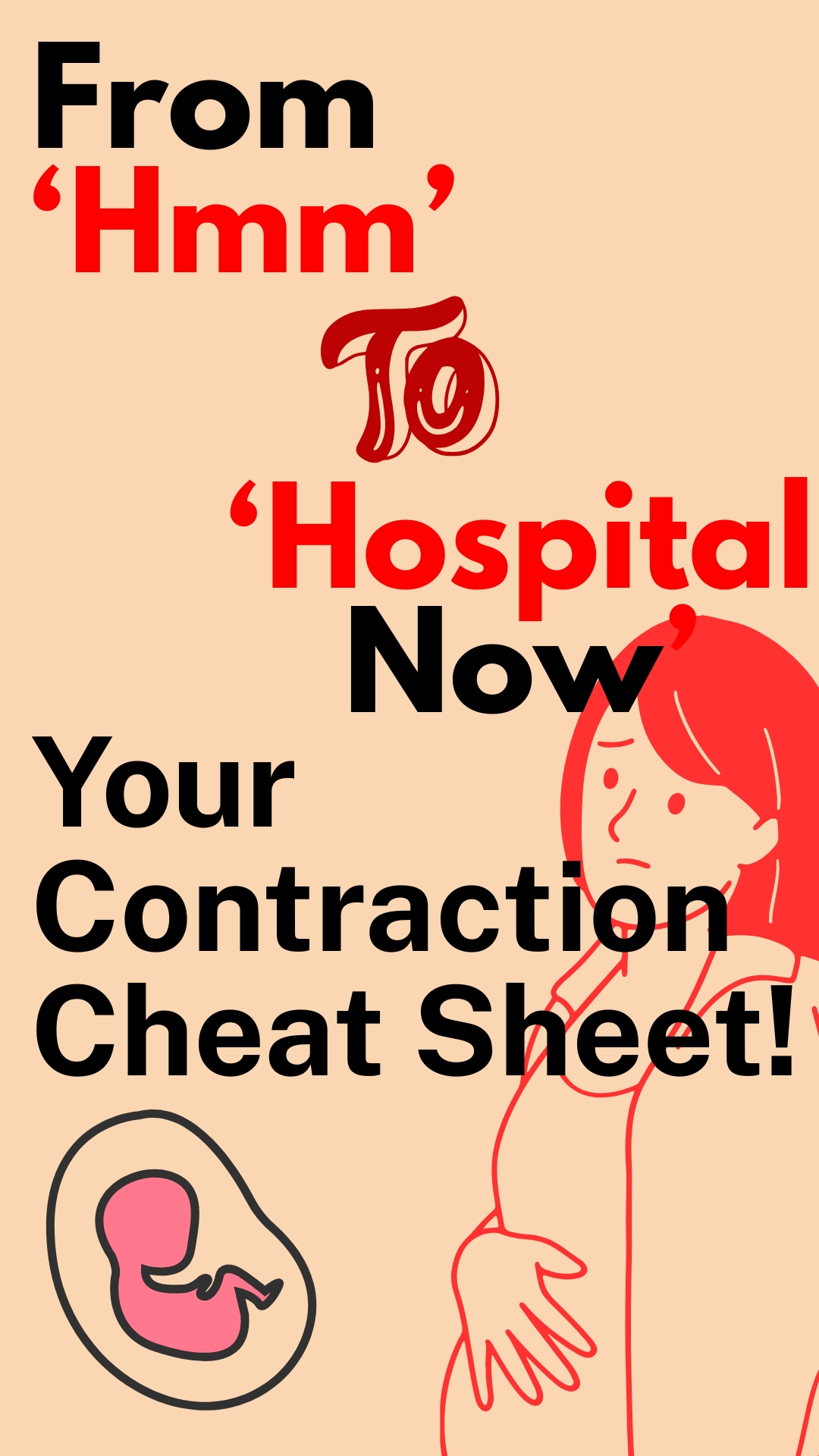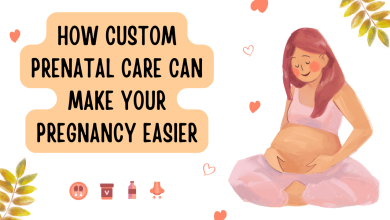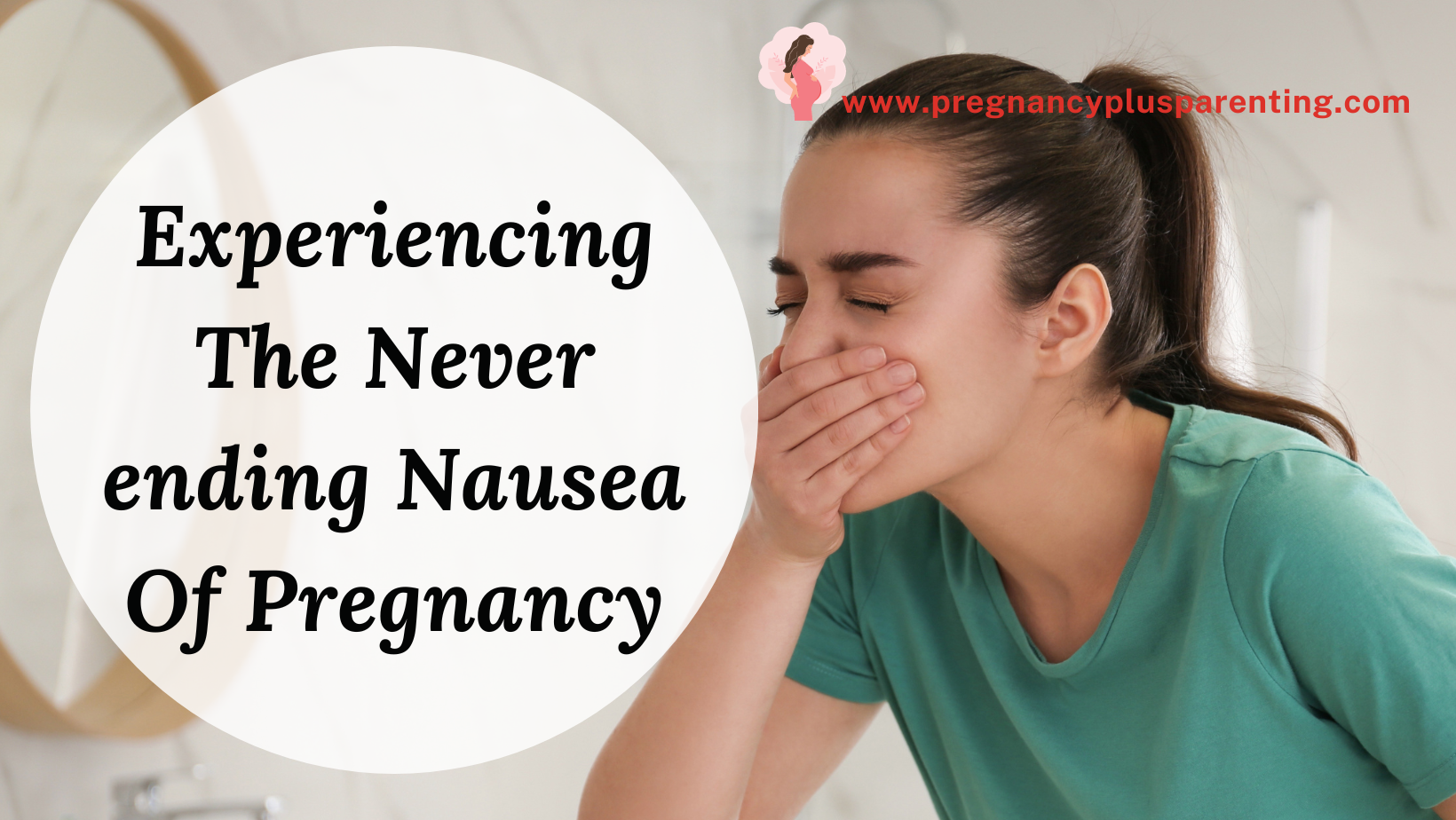From ‘Hmm’ to ‘HOSPITAL NOW’—Your Contraction Cheat Sheet!
Contractions! Premature contractions, Braxton Hicks contractions, labor contractions, dilation contractions, labor pains, pushing contractions, afterpains, and many other terms that describe contractions or even contractions often revolve around one question: What do contractions feel like?
These are surely questions that plague and confuse you when you’re a newly pregnant woman with absolutely no idea about the whole thing. And then you come across all sorts of horror stories from friends or read about them on the internet.
It’s no wonder that many pregnant women, especially first-time mothers, are afraid of childbirth and begin to tremble at the thought of giving birth. Reading some of these texts, one often gets the feeling that labor will last a lifetime.
In addition, there are so many different names for the different types of contractions that it is not uncommon for expectant mothers to get lost among the vast amount of information.
But don’t worry, although there are several types of contractions, each of them has its own function, namely that you will soon be holding your baby in your arms.
Like so many other expectant mothers, you’re probably just dying to finally hold your baby in your arms. Especially as the due date approaches, you become increasingly nervous and the anticipation grows.
You observe your body and ask yourself when the time will come and when it will start.
Especially in the last weeks of pregnancy, the anticipation is very nerve-wracking because so many emotions are mixed up.
Anticipation, concerns and fear are a part of every pregnancy and birth.
But it’s all about staying calm and being patient. That sounds easier than it is, especially for first-time mothers who wonder what contractions feel like or whether their body’s signals are just a false alarm.
You’ve probably read a lot about it and know that there are different types of contractions. I’ll explain to you how you can distinguish real contractions from practice contractions, so that your trip to the hospital isn’t in vain.
Because even if it’s not yet time for your gynecologist and midwives to send you home, it might be a good idea. It could take a few hours or even days until that happens.
I’ll now explain to you what real contractions feel like and when it’s time to head to the hospital!
Only 10-15% of births are induced by a rupture of the membranes, and you can tell whether this is actually the case by the contractions you feel.
If your water breaks at home , you should start making your way to the hospital or birthing center.
Although it doesn’t mean that the baby will actually arrive soon, if the amniotic sac breaks, the risk of bacteria and germs reaching the baby increases.
There’s another risk: the baby could become entangled in the umbilical cord and thus be deprived of oxygen, which could be fatal for the unborn child. It’s best to head to the hospital immediately when your water breaks and get checked out there.
What do contractions feel like and what are contractions?
You can feel labor pains, also called contractions, when your uterus contracts. You may feel your belly harden .
You cannot consciously control the muscles of your uterus and if the contractions occur at regular intervals, they are real contractions.
Not all contractions occur at regular intervals or have the same intensity. Contractions vary in frequency and strength.
There are many different types of contractions, and not all of them are signs of labor. However, they all serve as preparation for labor and are ultimately an essential part of the baby’s birth.
You’ll feel the pain in your abdomen, groin, and the area around your sacrum or pubic bone. No two women are the same, and every birth is different. Many women report that contractions are similar to menstrual pain.
However, contractions can also be very unpleasant and painful and serve to push the unborn child into the correct position.
Although there are some methods for pain relief, you can also reduce labor pain with proper breathing techniques, which you can learn and practice in a childbirth preparation class .
As you’ve probably already read or heard, there are several types of contractions. You should pay particular attention to early contractions, which can occur before the end of the 37th week of pregnancy, because these contractions can lead to premature birth.
Premature contractions should be taken seriously and it is best to contact your gynecologist or midwife and get advice.
I will now explain to you what types of pregnancy contractions there are, how you can recognize and differentiate them, what they feel like, and how you can relieve the pain!
What do pre-labor contractions feel like?
The so-called Braxton-Hicks contractions, which were named after their discoverer Braxton Hicks, are colloquially called pre-labor contractions or practice contractions.
This British doctor discovered in 1872 that women can have contractions as early as the second month of pregnancy.
However, these contractions are not a harbinger of the impending birth and women cannot feel them yet; only later, when the uterus grows, are the light contractions noticed.
Don’t worry, these contractions won’t affect your cervix, and your uterus will remain tightly closed. So don’t worry if you’re just getting comfortable and you feel your belly tighten.
These are definitely the pre-labor contractions, which are an important part of pregnancy and for your body, because they allow the uterus to practice for birth and ensure better blood circulation.
The pre-labor contractions are irregular and occur at long intervals. During the contractions, your stomach becomes hard, and you may feel a slight pulling sensation extending into your groin.
However, they are not intense, and although they may feel uncomfortable, they are not painful. They also last a short time, and you may not even notice them.
Braxton Hicks contractions are important and have been proven to facilitate labor. But even if you don’t feel or notice any, there’s no reason to worry.
However, if you find the pain too intense and painful, you can relieve it by staying calm and trying to relax. A warm bath, a hot water bottle, or a warm heating pad can help.
Heat provides relief and makes you feel comfortable and relaxed.
What do premature contractions feel like?
Premature labor is also colloquially called early labor. Early labor occurs exclusively before the 36th week of pregnancy.
week of pregnancy and are similar to period pain.
Preterm labor is a real contraction that affects the cervix and dilates the cervix. Unlike preterm contractions, you may experience preterm labor more intensely and it can also be painful.
If they occur regularly and you feel downward pressure and pain extending into your groin and back, then it’s time to consult your doctor or midwife. Premature labor is usually triggered by the mother’s overtiredness .
Now it’s important that you take a step back and rest a bit; you may even be prescribed bed rest. Premature contractions are serious because the cervix shortens and the baby descends, opening the cervix.
In the worst case, premature birth can occur. However, premature labor can also be triggered by various infections, such as bladder or urinary infections.
That’s why it’s important to contact your doctor, who will make the correct diagnosis and decide whether you need labor-inhibiting medication or infection treatment.
You should avoid stressful situations and exertion, let your body and baby decide when it’s ready, and rest as much as possible. Premature contractions should be monitored so that appropriate measures can be taken if necessary.
What do labor pains feel like?
Braxton Hicks contractions usually occur after the 36th week of pregnancy. If you feel a pulling sensation in your stomach, back, or even your legs during this time, they are likely braxton Hicks contractions.
Braxton Hicks contractions are so called because they help your baby slowly move into the correct birth position. The baby’s head descends further into the pelvis, thus assuming the starting position for labor.
Lightening contractions are usually non-cervical, meaning they don’t cause the cervix to dilate. However, they do affect the cervix, which gradually becomes softer and shorter.
The pain of lightening contractions is similar to severe period pains and now you feel a pulling sensation in your lower abdomen and you will probably perceive them as much more intense than practice contractions.
Many women do not feel the labor pains at all, but they do feel relief.
This is because the baby has now slipped deeper into the pelvis and you may notice that your baby bump has also shifted a little downwards.
Moms who have suffered from heartburn, in particular, rejoice and enjoy this phase, as the baby no longer exerts as much pressure on their stomach. The pressure on their lungs also decreases, and their breathing is no longer as short as before.
However, the feeling of pressure shifts downward, and the baby now presses on the bladder and rectum. This can lead to increased toilet visits.
What do labor contractions feel like?
Dilation contractions or labor contractions (also called transitional contractions) are definitely real contractions, and now the moment has arrived. The rhythmic contractions of the uterus push your baby further and further toward the cervix.
Even though the contractions are now more intense and painful, it’s definitely a reason to celebrate. However, no one can predict exactly how long it will take until you hold your baby in your arms.
Labor lasts an average of 13 hours, although it can take longer for first-time mothers. Every woman and every birth is different, and your baby and your body will decide when exactly it’s time.
The opening contractions feel gentler at first, coming every ten minutes. Although they are already painful and last about 30 to 45 seconds, they are still milder than the subsequent expulsion contractions.
These contractions may also subside and become irregular at times. It may take hours for them to become regular and for the cervix to fully dilate.
These contractions start gently and then become more regular and stronger. They begin under the breast and you feel them all the way down to your uterus. They are wave-like, meaning they start gently, reach a peak, and then subside.
After a while, you’ll notice your body starting to cope with the dynamics of labor on its own. The body now releases the endorphin hormone oxytocin, which eases the pain of the opening contractions.
For the release of hormones, it’s important that you feel comfortable and are in familiar surroundings. If the opening contractions are still irregular and quite weak, then it’s not time to leave yet.
However, you can call the hospital or contact your gynecologist. They will likely advise you to stay home until the contractions are less frequent than five minutes apart.
Since labor pains affect the cervix and occur at increasingly shorter intervals and last longer, it is quite possible that your water will now rupture.
To prevent your amniotic fluid from completely draining, it’s best to lie down with your feet slightly elevated. This also reduces the risk of your baby becoming tangled in the umbilical cord.
Just don’t panic, calm down and lie down and then pick up the phone and call the hospital or birthing center.
There, a midwife or your doctor will advise you on what you need to do and whether you should go to the hospital immediately.
The longer you stay at home in a familiar atmosphere, the more endorphins your body produces, which will help ease pain during labor. While you’re at home, you can “get used to” the contractions and experiment with what works for you.
Whether it’s a certain breathing rhythm or a position, perhaps sleeping or moving, that makes contractions more bearable is irrelevant. The main thing is that you don’t panic and listen to your body’s needs.
What do expulsion contractions feel like?
Once the dilation stage is over, your baby is ready to see the outside world. Now the expulsion stage begins, which lasts shorter than the dilation stage but can last from 20 minutes to hours.
The expulsion contractions are coming in waves, and you’re now in the penultimate stage of labor. It won’t be long now until you can hold your baby in your arms.
The baby’s head presses on your intestines and you feel a strong urge to push.
The expulsion contractions actively push the baby through the mother’s pelvis. You may also feel the birth canal expanding. The downward pressure the woman feels is due to the expansion of the birth canal and the pelvic floor.
The expulsion contractions are the most intense, and the midwife will guide you through every stage of labor. You should pay attention to your body’s sensations and do everything advised to make the birth as pain-free as possible.
These contractions typically occur every three minutes, and you still have plenty of time to recover between contractions. As unbelievable as it may sound, some women even fall asleep during this brief rest period between contractions.
Expulsion contractions last 60 seconds and can be exhausting. At this point, you’ll probably want to give up and moan, maybe even curse, but save your energy; you’ll need it later, because the expulsion contractions are just a prelude to the pushing contractions.
What do pushing contractions feel like?
Pushing contractions are the most painful contractions during labor. The sensation of stretching and downward pressure is at its most intense during this stage of labor. Although they are very painful, you may feel some relief because you can now participate.
The cervix is now fully open and your baby is so deep in the birth canal that it is pressing on your rectum and you have no choice but to push.
Even if it’s almost impossible, try to keep a clear head and listen to your midwife, who will help you ensure your baby enters the world as gently as possible.
This phase of labor is the final stage and can last up to four hours. The contractions may occur at intervals of three minutes, until there is no rest period at all.
They will then be introduced one after the other without a transition period. As painful as it may sound, you’re probably already a pro by now, and it won’t be long before it’s all over and you hear the scream.
What are afterbirth contractions?
As if you weren’t confused enough, there are also afterbirth contractions and afterpains. Many people think the baby is here and that’s it. But no, not by a long shot, because now comes the afterbirth contractions, which usher in the afterbirth.
After the baby is born, the uterus contracts again, and the woman delivers the placenta. Afterbirth contractions help the uterus detach the placenta and expel it.
After the placenta is expelled, the healing process and involution of the uterus begins and at the same time the lochia begins.
The lochia will now last for a few weeks and during this time the wound in the uterus where the placenta was attached will begin to heal.
You probably won’t even notice afterbirth contractions after the expulsion and pushing contractions, especially if you’re a first-time mother and are overwhelmed by the whole thing.
The postpartum contractions last 30 minutes and are not that intense and can be compared to menstrual pain.
What are afterpains?
Afterpains are contractions you’ll feel for days after giving birth. First-time mothers report that they’re only a light, gentle pulling sensation in the abdomen, while those who have given birth before report feeling them much more intensely.
You may feel afterpains especially when breastfeeding because the hormone oxytocin is released during breastfeeding, which helps the uterus shrink .
Don’t worry, these contractions will only last a few days, and your body is now healing. After a few days, they will subside, and a new era will begin for you.
When should I go to the hospital?
The best advice is actually to stay home as long as you feel comfortable. Because the longer you stay home, the more you’ll save yourself the hassle of pacing and walking down the hospital corridor.
And it’s also known that the birth is then much easier and less complicated. It’s also quite possible that you’ll be sent home because it’s not quite ready yet.
Before you arrive at the hospital, your contractions should be regular and occurring every five minutes. But if you’re unsure, you can always call your midwife for advice.
When you arrive at the hospital, you will probably be connected to a cardiotocogram, also known as CTG for short, to determine how far your labor has progressed.
If your cervix is already dilated and your contractions are regular, you’ll likely stay in the hospital. However, if your contractions are irregular and you’re less than 2 centimeters dilated, you’ll be sent home, as it could be days before you give birth.
So, if you have any doubts, pick up the phone and call your midwife, she will definitely take the time to explain everything to you clearly.
However, you should go to the hospital immediately if your water has broken and your amniotic fluid is greenish, or if you feel a strong urge to push or have bloody discharge. If these conditions occur, you don’t need to call ahead; you can go right away.
Promote labor?
Under no circumstances should you stimulate labor on your own or attempt to induce labor in any way, even if you’re past your due date.
Sex is also said to be a means of inducing labor, although this hasn’t been scientifically proven. Semen does contain prostaglandins, which soften the cervix, but only in small amounts, not enough to induce labor.
Some midwives prescribe so-called labor cocktails to stimulate labor. However, this usually means remaining patient, even if labor doesn’t start after the due date.
You will probably need to go to the hospital every 3 to 4 days for check-ups where CTG scans will be done to determine if your baby is doing well.
If during these checks it is observed that the baby’s heartbeat is slowing down or another indicator shows that the baby is not well, immediate action will be taken and a cesarean section may be necessary.
If you’re 10-14 days past your due date, labor will be induced using so-called labor cocktails. However, many women report that induced contractions are much more painful than natural ones. This may be because they’re simply unfamiliar to the body.
Is there pain relief for labor?
Not every hospital offers all methods for pain relief during labor, but I will now tell you which ones are available.
Complementary medicine methods that can help you get through childbirth as pain-free as possible include acupuncture and aromatherapy.
Although they are not considered medical methods, some hospitals still offer them. Aromatherapy, using scented or massage oils, is used to create a soothing and relaxing atmosphere in delivery rooms.
Complementary medicine methods can alleviate the pain, but cannot completely eliminate it.
Conventional medical methods, on the other hand, are somewhat more effective at relieving labor pains. They are usually only administered when the woman is exhausted and can no longer continue, to give her a break, or during long labors.
There are suppositories and infusions that work against the cramps and make the pain more bearable.
Opiates are also used for pain relief. While they reduce pain, their use is limited because opiates can also affect the baby.
And finally, there is epidural anesthesia, or PDA for short, which has no negative effect on the baby and eliminates pain completely.
The epidural is also very popular among women giving birth, although doctors claim that it also carries some risks.
However, many mothers decide to have an epidural in the delivery room during the final stages of labor, when it is already too late for an epidural.
Final thoughts
Dear Mom, I hope you are doing well and are not reading too much misinformation about pregnancy, birth and the time afterward.
We women often tend to exaggerate things a bit, and that’s why no one believes us when we say how exhausting and painful childbirth can be.
But don’t worry, our bodies are built for it, and we are strong enough to endure the pain so that we can then enjoy motherhood . Because that’s our nature, and we were created for it.
And besides, it really is a tiny price we have to pay to be so rewarded and bring the love of our lives into the world.
Believe me, even though the various contractions sound horrible, it’s not that bad. I don’t want to lie to you, it hurts, it hurts like hell.
But once you hold your little treasure in your arms, you’ll quickly forget everything. Because if it were that bad and unbearable, and if it weren’t worth it, no woman would want to bring more than one child into the world.
Now, are we crazy or brave if we want to go through it more than once? That’s a good question. First-time mothers can perhaps be understood, because they don’t know what to expect. But those who have given birth multiple times? What’s their problem?
Jokes aside, I asked myself that question too and thought for a while after my first birth that I never wanted to go through it again, but when your body heals, when you see the child growing up, you quickly forget those few hours of exertion and pain.
So don’t worry, you can do it. Just remember to stay calm and follow the advice. It would also be great if you took a childbirth preparation class, where you can learn a lot about pregnancy, birth, and the time afterward .
In such a course, you will not only learn how to deal with the new situation and how to prepare for the birth, but also what to expect afterwards and how your body reacts and heals after the birth .







